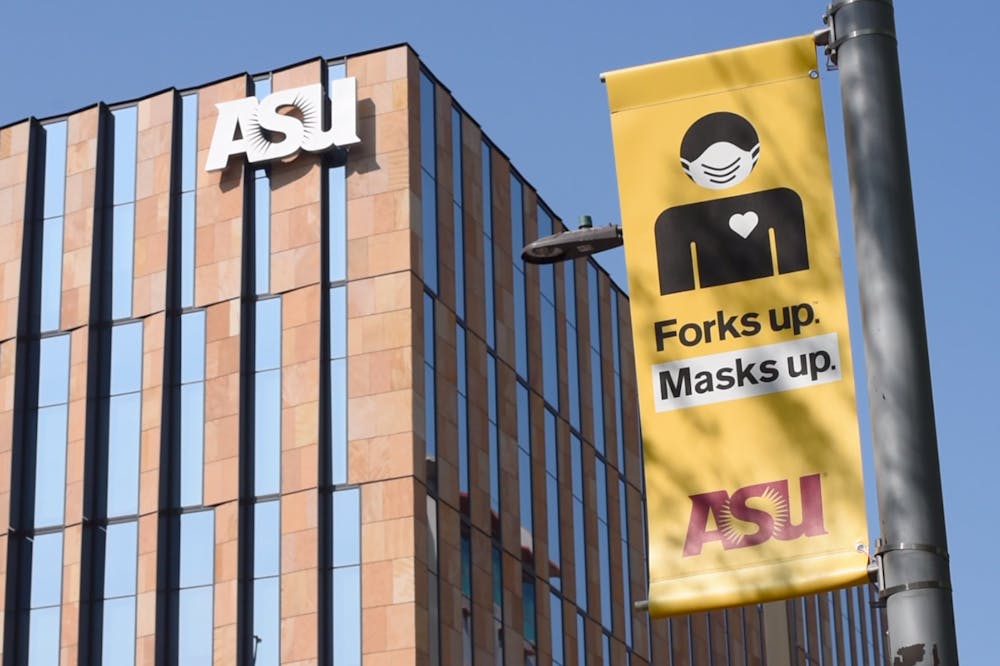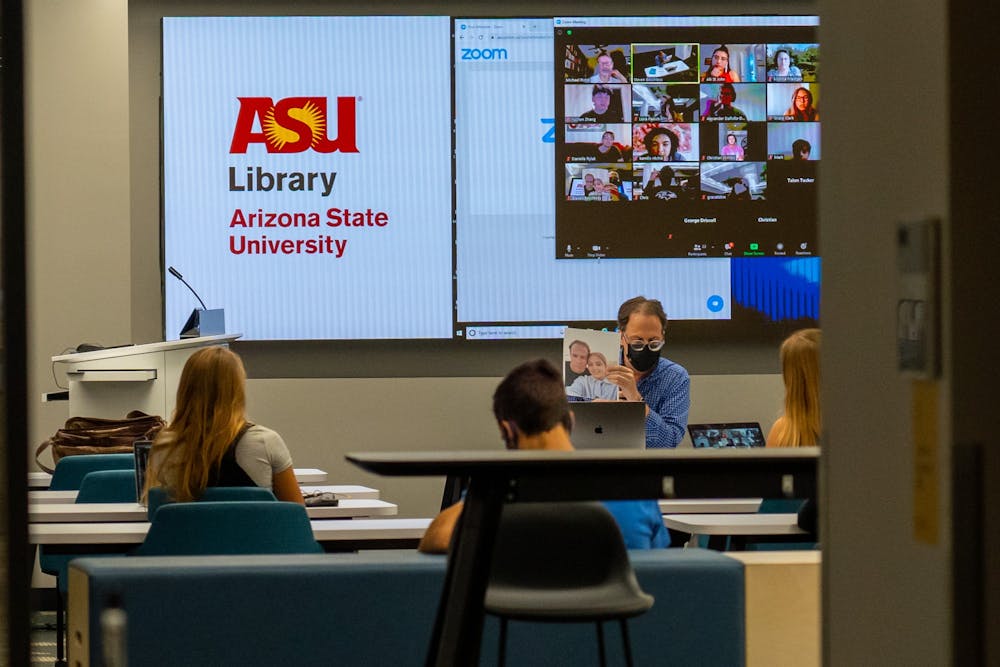University administrators are using the end of this semester to prepare for the spring, which will most likely look and feel very similar to what students and faculty are experiencing now.
In an interview last month with President Michael Crow, he said "there's too little information" to make a final decision about something like spring break, but classes will still be offered though ASU Sync — in which students have the option to return to campus for instruction — and iCourses.
A Monday email from Mark Searle, executive vice president and University provost, said next semester will include "increased in-person opportunities, outdoor learning spaces across each campus, and greater comfort with the technologies we're using for teaching and learning."
"The impacts of COVID-19 are ongoing, and ASU understands that you may need continued flexibility on where and how you will attend classes in the spring," Searle said in the email.
The University will use the end of the fall semester to begin to "reassemble" for the spring semester and "maybe do some new things" in order to "get a better kick-off," Crow said last month.
Options through ASU Sync allow students to attend classes remotely, but the experience did not look the same for everyone. Roughly 900 classrooms across ASU's campuses were equipped with one of three technology designs featuring variations of audio and video arrangements.
READ MORE: Three types of ASU Sync classrooms available for various class needs
According to Frederick Corey, vice provost for undergraduate education, the University is working to create A+ and B+ options for next semester, which includes some technological updates from the A and B models. An A+ classroom would require faculty to press just one button to launch Zoom and updates to a B+ classroom would include hanging microphones.
"The problem with the B room is that when a student who is physically in the room talks, the students on Zoom can't hear," Corey said. The hanging microphones will likely solve that issue, he said.
Corey said it might be hard to notice, but faculty members in A rooms often go to class early in order to log in to the teaching station, welcome students to the space and then start streaming on Zoom. The University is looking to upgrade the technology so faculty can start class quicker.
Outdoor spaces will also be utilized next semester in an effort to upgrade classroom spaces for limiting the spread of COVID-19 and making more students comfortable to come back to campus, Corey said.
"Some of these spaces are new, some of the spaces are there and we might just not even know about it," Corey said, listing Tempe's College Avenue Commons and the secret garden and the Arizona Center near the Downtown Phoenix campus.
Along with creating new spaces, the University may recommend its preferences of existing outdoor spaces faculty and students can use. Corey said standard English composition courses may not be taught outside, but spaces will be available for academics and socially distant gatherings.
The University's Community of Care guidelines, like wearing a mask and keeping six feet of distance, will still apply in a designated outdoor space.
Reach the reporter at pjhanse1@asu.edu and follow @piperjhansen on Twitter.
Like The State Press on Facebook and follow @statepress on Twitter.

Piper Hansen is the digital editor-in-chief at The State Press, overseeing all digital content. Joining SP in Spring 2020, she has covered student government, housing and COVID-19. She has previously written about state politics for The Arizona Republic and the Arizona Capitol Times and covers social justice for Cronkite News.





